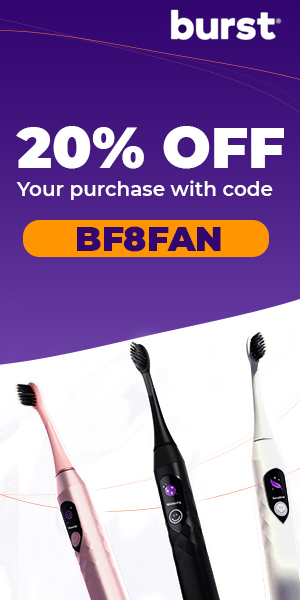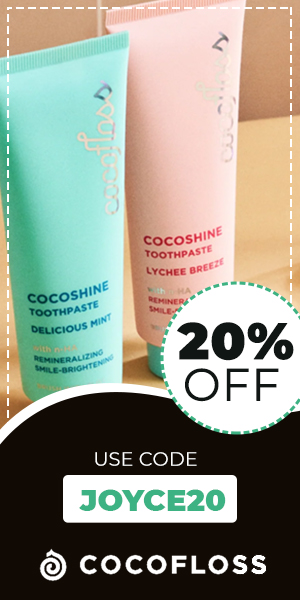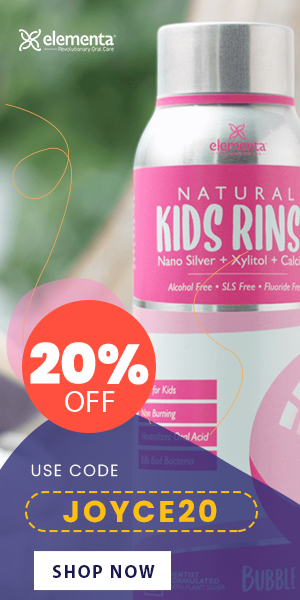Joyce the Dentist Highlights
- Toothpaste origins trace back to 3000 BC with gritty Egyptian powders
- 1824: Dr. Peabody’s soap-and-chalk blend creates the first true paste
- 1892: Collapsible tubes revolutionize hygiene and portability
- 1914: Fluoride added, slashing cavity rates worldwide
- Post-WWII gels, mid-1980s whitening stripes, and today’s trendy charcoal & probiotic options all build on these breakthroughs
Did you know toothpaste got its start over 5,000 years ago as gritty powders in ancient Egypt?
From Egyptian grit to modern minty gels, toothpaste has undergone millennia of refinement. What began as crushed shells and ashes has transformed into sophisticated formulas that not only freshen breath but also prevent cavities and fortify enamel.
Let’s explore its journey: from early abrasives to fluoride and the innovations we use today.
When Did Toothpaste First Originate?
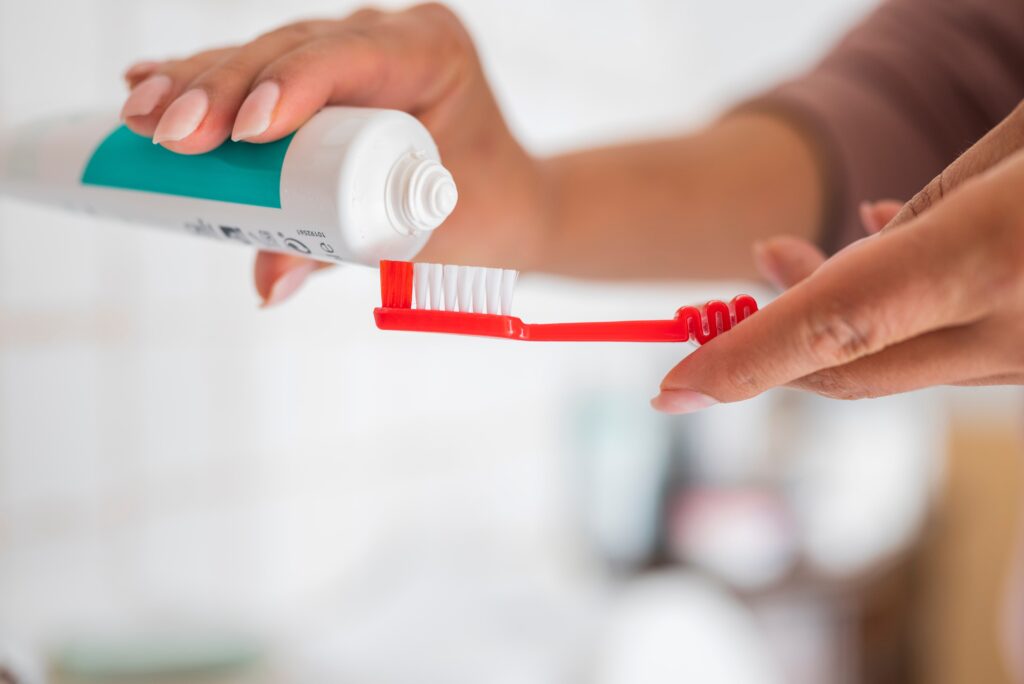
So, next time you squeeze out a dollop of minty gel, remember: toothpaste is older than most civilizations. Around 3000 BC, ancient Egyptians were already tackling dental hygiene, just with very different ingredients.
Ancient Abrasive Powders (3000 BC Egypt)
They didn’t have fancy gels or tubes. Instead, they ground up:
- Ox hooves
- Myrrh resin
- Eggshells
- Pumice
- Water
The goal? A gritty paste that could:
- Scrub away food bits
- Freshen breath
No peppermint flavor, no slippery gels, but a simple (…and effective?) way to keep teeth clean. It’s proof that our ancestors cared about oral health almost as much as we do today. Or at least, let’s hope so!
Classical World (Greece & Rome)
After Egypt, the torch passed to the Greeks and Romans, civilizations known for advancing science and daily routines alike. They refined the idea of abrasive cleaning and experimented with new ingredients.
Common ingredients:
- Crushed bones
- Oyster shells
- Charcoal
What it achieved:
- Abrasive action: Scrubbed away plaque
- Whitening effect: Charcoal added a rudimentary bleaching touch
Their experiments laid the groundwork for understanding how gentle abrasion could keep teeth clean, long before toothbrushes as we know them existed.
Medieval to Early Modern Europe & Arabia
As trade routes expanded and cultures mingled, toothpaste ingredients became more varied and sometimes quite surprising.
Popular abrasives & cleansers:
- Fine sand from riverbeds
- Salt scrubs for antiseptic action
- Herbal rinses using mint, rosemary, or myrtle
Cultural twist:
- In Arabia, aromatic herbs doubled as breath fresheners.
- European folk remedies often included vinegar or wine to dissolve stains.
These regional recipes show how people adapted local resources to care for their teeth long before the age of commercial toothpaste.
How Did Toothpaste Evolve into a Paste?
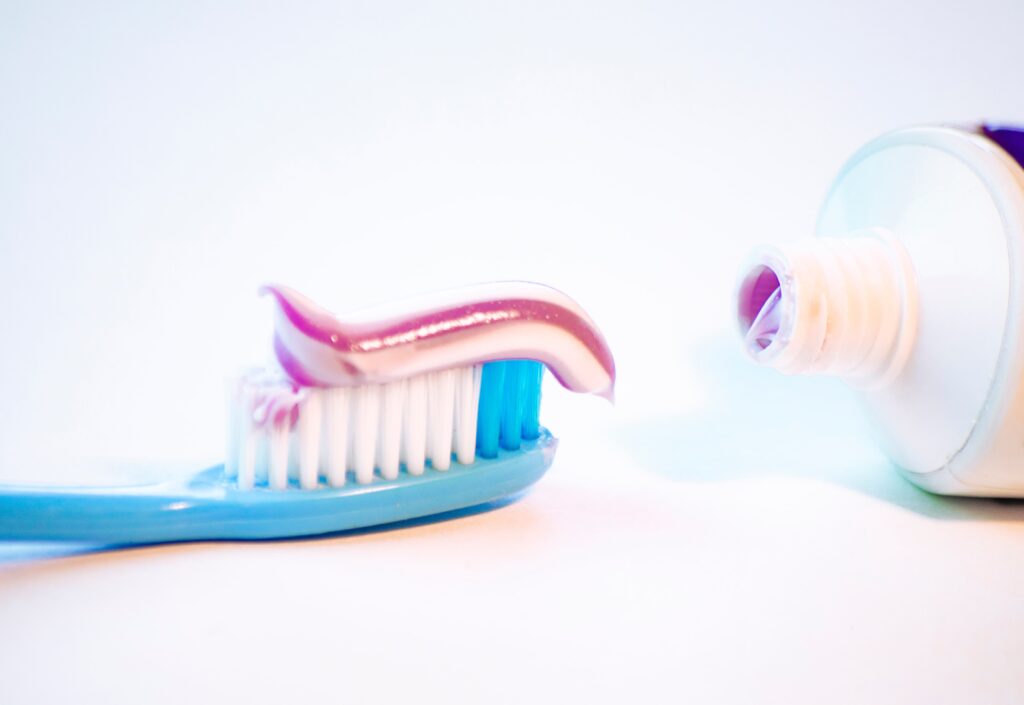
Why go from powders to pastes?
Imagine brushing your teeth with gritty dust that barely sticks. No fun, right? By the late 1700s, people knew a smoother mix would clean better and taste…well, less like dirt.
They wanted:
- A formula that clung to each tooth.
- A hint of tang instead of chalky blandness.
- No more dipping fingers into a jar of powder.
Late 1700s Homemade Recipes
Enter the DIY enthusiasts of the era.
They blended burnt bread crumbs for gentle abrasion, tree resins to bind everything together, and a splash of vinegar or lemon juice for extra sparkle.
Suddenly, toothpaste was something you could spread without the mess, just a simple, sticky paste that cleaned better and felt a whole lot nicer.
Benefits of a Paste Form
Making toothpaste into a smooth paste changed everything.
Instead of a powder that slid off your brush, a creamy paste clung to every nook and cranny, boosting its scrubbing power. You felt the cleaning action working its way across each tooth, and the experience was simply more satisfying.
Plus, paste formulas could carry flavors and nutrients.
A hint of vinegar or resin made brushing taste less like chalk, and manufacturers could blend in minerals (like calcium) that strengthen enamel.
Who Invented Toothpaste?
Who first turned abrasive powder into a cleaning paste?
Long before squeezable tubes and minty flavors, someone had to make that leap from dusty powders to a spreadable cream.
Enter Dr. Washington Peabody.
1824 – Dr. Peabody’s Soap-Chalk Blend
In 1824, Dr. Peabody mixed soap with a chalky base to create what we’d recognize as the very first toothpaste. The soap provided a gentle foaming action, while the chalk helped scrub away plaque.
This simple combo proved that a paste could clean teeth more effectively than loose powders. Peabody’s formula paved the way for mass production and the many toothpaste innovations that followed.
Mid-1800s Refinements
By the 1850s, dentist John Harris boosted cleaning power by tossing more chalk into the mix, giving the paste extra grit to tackle stubborn plaque.
Two decades later, in 1873, Colgate launched the first jarred toothpaste, bringing ready-made dental care to homes everywhere and setting the stage for the brands we know today.
When Was Toothpaste Packaged in a Tube?
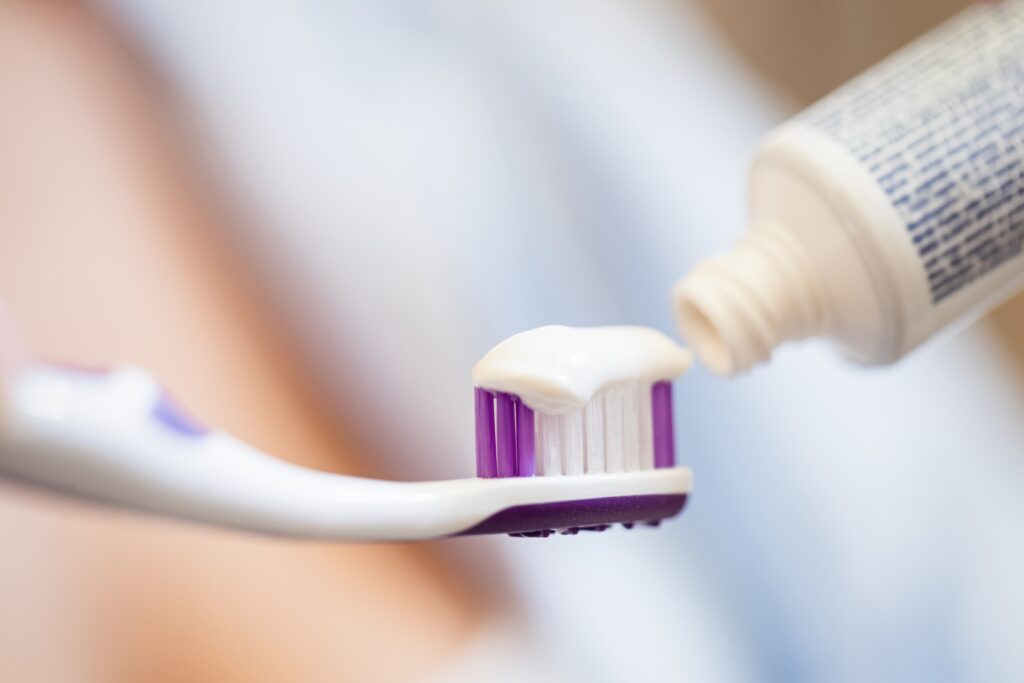
How did tube packaging revolutionize dental care?
Before 1892, you scooped paste from jars, double-dipping brush bristles into a shared container. Not exactly hygienic.
1892 – Dr. Washington Sheffield’s Collapsible Tube
Dentist Washington Sheffield borrowed collapsible paint tubes and filled them with toothpaste. Suddenly, you could squeeze out just what you needed without dipping, meaning no contamination.
The impact was immediate:
- Each squeeze delivered a fresh dose. No more jar germs.
- Travelers could tuck a tube into their luggage without fear of spills.
Tube packaging didn’t just make brushing cleaner; it made it convenient and set the standard for over a century of toothpaste design.
When Was Fluoride Added to Toothpaste?
Why is fluoride the #1 cavity fighter?
In 1914, researchers in Colorado Springs observed that children drinking naturally fluoridated water had dramatically fewer cavities. Spotting fluoride’s decay-preventing power, early trials began to blend sodium fluoride into toothpaste, marking the first time a paste didn’t just clean but actively strengthened enamel.
By the 1950s, fluoride had become a standard ingredient in most toothpaste brands, thanks to mounting evidence of its safety and effectiveness.
This simple addition triggered a major public health win: cavities plummeted across communities. Curious about the flip side? Learn what happens when you stop using fluoride toothpaste.
What Modern Innovations Shaped Toothpaste?
What features make today’s toothpaste so effective?
Post-World War II: Synthetic Detergents & Smoother Gels
After World War II, toothpaste makers swapped out harsh soap for mild synthetic detergents like sodium lauryl sulfate. This simple change transformed toothpaste into a smooth, stable gel that:
- Foamed consistently, boosting plaque removal
- Felt gentler on gums, no more soapy irritation
- Held flavors and whitening agents more effectively
The new gel base laid the foundation for the colorful stripes and transparent pastes we see on store shelves today.
Mid-1980s to 2000s: Cosmetic & Functional Boosts
By the mid-1980s, toothpaste was getting a makeover. Manufacturers introduced colorful stripes and clear gels, adding visual appeal alongside practical benefits.
First up were stripe patterns and whitening agents, giving you that “just-polished” sparkle with every brush. Many still debate whether whitening toothpastes actually work.
Next came enamel-strengthening additives and mineral boosters, formulas loaded with calcium phosphates and silica to reinforce your smile’s foundation.
Finally, tartar-control formulas hit the scene, combining pyrophosphates and chelators to slow down hard buildup around the gumline.
These innovations transformed toothpaste from a simple scrub into a multi-tasking oral health powerhouse.
Today’s Trends: Are They Worth the Hype?
These days, toothpaste aisles look more like candy shops, packed with every flavor under the sun. Sure, your sweet tooth might cheer for strawberry-mint or bubble-gum blasts, but do they actually clean better?
We’ve rounded up our favorites for flavor in the best-tasting toothpastes, but remember: taste is no substitute for fluoride and proper brushing.
Charcoal cleansers promise a Hollywood smile, yet dental pros warn they can be too abrasive, scratching enamel rather than gently lifting stains.
And then there’s probiotic-infused pastes, an intriguing idea, but solid clinical evidence on cavity prevention is still scarce.
Eco-friendly tubes and recycled packaging make you feel good about your purchase, but they often come with a higher price tag, and sometimes the same basic formula inside.
Finally, CBD-infused toothpastes are popping up on shelves, though little research backs any real benefit for your teeth or gums.
In short, trendy doesn’t always mean better. Stick with proven ingredients and brushing techniques first, then splurge on flavor once you’ve nailed the basics.
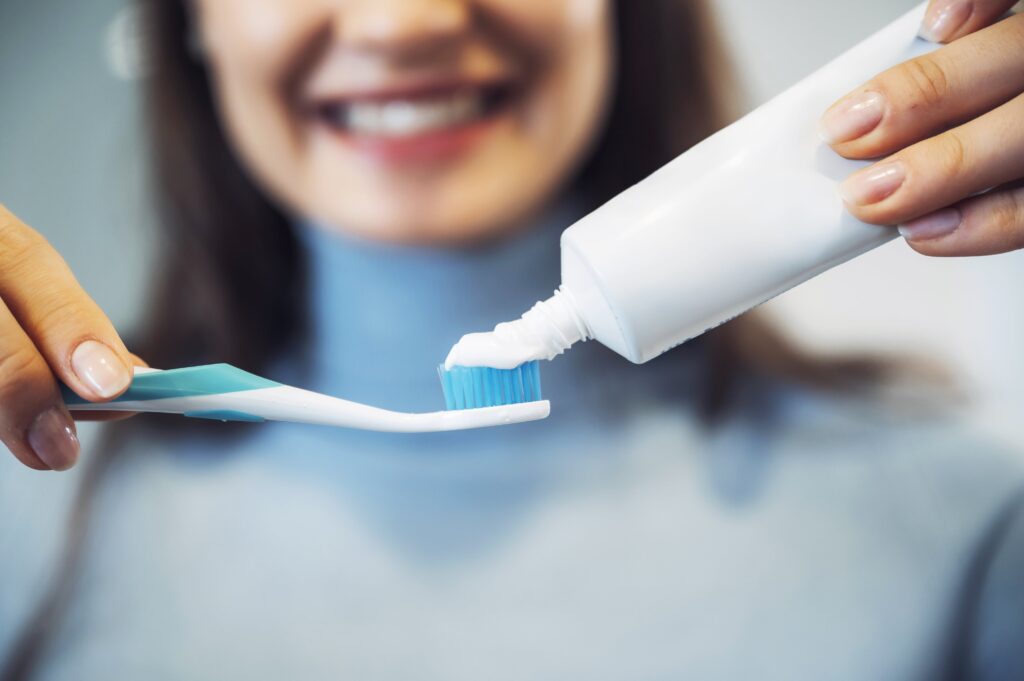
FAQs
When did humans start using toothpaste?
As early as 3000 BC, Egyptians were mixing abrasive powders with water to scrub their teeth clean.
How did they brush their teeth before toothpaste?
They used chew sticks or cloth, rubbing gritty powders, like crushed shells or charcoal, against their teeth.
Did they brush their teeth in the 1700s?
Yes. By the late 18th century, homemade pastes of burnt bread crumbs, plant resins, and vinegar provided a spreadable alternative to dry powders.
What did toothpaste look like in the 1800s?
Early commercial pastes were simple white creams (soap and chalk blends) sold in jars long before tubes existed.
When was toothpaste first invented?
The concept dates back millennia, but the first recognizable toothpaste was formulated in 1824 by Dr. Peabody.
Who invented toothpaste?
Dr. Peabody’s 1824 soap-and-chalk formula is credited as the first true toothpaste.
When did toothpaste come in a tube?
In 1892, Dr. Washington Sheffield repurposed collapsible paint tubes for toothpaste, revolutionizing both hygiene and portability.
Why is fluoride added to toothpaste?
Since 1914, fluoride has been included to strengthen enamel and dramatically reduce cavities.
How did toothpaste go from powder to paste?
Late-1700s DIY recipes introduced burnt bread and resin mixtures, paving the way for Dr. Peabody’s early-19th-century soap-and-chalk pastes.
Key Takeaways
- 3000 BC: Egyptians cleaned their teeth with abrasive powders.
- 1824: Dr. Peabody’s soap-and-chalk blend creates the first paste.
- 1892: Collapsible tubes make toothpaste portable and hygienic.
- 1914: Fluoride was added, revolutionizing cavity prevention.
- 20th Century Onward: Gels, whitening, sensitivity relief, tartar control, and flavor innovations emerge.
Ready for More Smile-Boosting Tips?
Stay on top of your oral health game! Follow @joycethedentist for easy dental tips, product reviews, and all the latest in smile care. 😊





